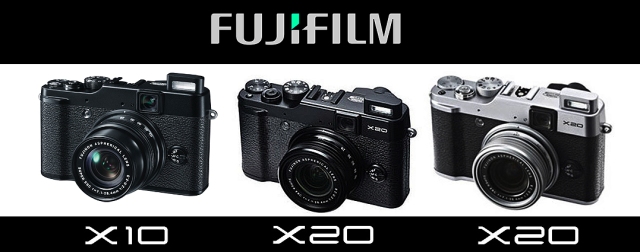The following is the press release about the two new cameras the Fujifilm X100s and Fujifilm X20
Fujifilm X100s
Two years ago, FUJIFILM launched the prestigious X100 with a FUJINON 23mm f/2 fixed prime lens and superb image quality, in a beautifully designed compact camera body. Its unique style and international acclaim has carved out a niche for a new genre of Premium Compact Camera, designed in pursuit of optimum operability. Today, FUJIFILM is proud to announce the launch of the FUJIFILM X100S, the successor to the FUJIFILM X100, inheriting its elegant design and high-performance lens, whilst evolving further to meet customers’ demands with the introduction of a higher-definition Hybrid Viewfinder and a new sensor and processor.
The X100S has the ability to capture high resolution images, comparable to those taken on full-frame sensors. This is down to a combination of its newly-developed 16.3 megapixel APS-C X-Trans CMOS II sensor and EXR Processor II, which together increase resolution by approx. 25% (*2) and reduce noise by more than 30% (*3). Clear images with minimal graininess, even at high ISO settings, can also be produced, thanks to the removal of the optical low pass filter and the introduction of a more powerful processor.
The newly-developed X-Trans CMOS II sensor has built-in Phase Detection pixels which provide the X100S with the world’s fastest AF in as little as 0.08 seconds (*1). Additionally, the EXR Processor II offers very speedy response times with a start-up time of approx. 0.5 seconds (*4), and a shooting interval of 0.5 seconds. Plus with its shutter time lag of only 0.01 seconds, it allows you to react quickly and capture each precise moment you want to with no missed photo opportunities.
Also new to the FUJIFILM X100S is the world’s first (*5) “Digital Split Image” feature, which displays dual images on the left and right to be lined up for manual focusing. This enables accurate focusing especially when working with an open aperture or macro shooting. What’s more there is a handy Focus Peak Highlight function, which shows you precisely which area of your composition is in focus.
Depending on the subject and scene, users can switch between two viewfinder options: optical or electronic. The Optical Viewfinder (OVF) is useful when users want to see their subject in the same bright clarity that they see with the naked eye, or when time lag is an issue. The high resolution 2.36 million dot electronic viewfinder (EVF) is useful when you want to be able to visually check focus, exposure, white balance and depth of field whilst composing the shot.
Main Features
(1) Sensor performance comparable to full-frame output
The X100S features FUJIFILM’s newly-developed 16.3 megapixel APS-C X-Trans CMOS II sensor with a unique, highly randomised, colour filter arrangement. The benefit of the new array is the elimination of the need for an optical low-pass filter; these are used in conventional sensors to reduce false colour and moiré effects but they also reduce image resolution. The removal of the optical low-pass filter allows the X-Trans CMOS II sensor to maximise the light it receives directly, enabling users to capture much finer detail and optimise resolution levels.


